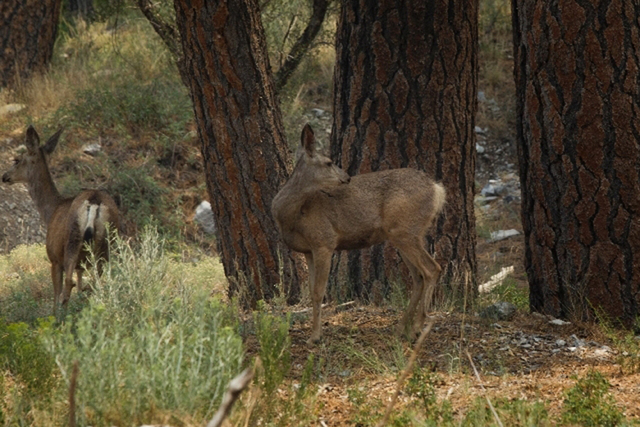Nevada game officials schedule emergency mule deer hunts

If you were unsuccessful in the big-game tag draw but still would like the opportunity to put some venison in your freezer this fall, there is hope.
On Saturday, the state Board of Wildlife Commissioners endorsed plans for two emergency mule deer hunts in a designated portion of Area 6. With winter looming, the hunts are for antlerless deer and were put in place as a pre-emptive measure.
Last summer, the Hot Pot and Izzenhood fires burned about 128,800 acres in Elko County and with it the most important winter range for migrating mule deer in that part of Nevada. Of specific concern is the area known as the Izzenhood Basin.
Before the fires, “Izzenhood Basin represented the last large block of intact Wyoming sagebrush in the Izzenhoods,” said Matt Jeffress, a big-game biologist for the Nevada Department of Wildlife. “This winter is going to be very tough on this segment of the Area 6 deer herd.”
NDOW biologists estimate that as many as 3,000 to 4,000 mule deer migrate into this area from December to April. They are hoping the emergency hunt will reduce some pressure on a limited resource.
“The goal of this emergency hunt is to reduce the density of deer that use the Izzenhoods for crucial winter range before the onset of winter,” NDOW mule deer biologist Cody Schroeder said. “Since a large portion of this winter range burned, it will no longer support as many deer as it has in years past. If we have a severe winter this upcoming year, we may see a large scale die-off of mule deer on this winter range even with reduced densities resulting from this hunt.”
Anyone who was around during the severe winter of 1992-93 will remember the significant winter kill that had a major impact on Nevada’s mule deer herds. Especially hard hit were deer herds on either side of the Interstate 80 corridor and between there and Nevada’s northern state line.
Nevada hunters often are reluctant to harvest does. Some might even ask why officials want to remove does rather than offering hunters the chance to harvest a buck.
“We typically target adult females when trying to reduce the density of animals on crucial winter range, which may have limited carrying capacity,” Schroeder said. “In terms of population dynamics, females (more specifically their reproductive success) are usually the driving factor in determining how many animals the habitat will have at any one time.”
The doe hunts also might be a good opportunity for youth hunters who were unsuccessful in the tag draw. The drive from Las Vegas to the Izzenhood Range can be a long one, but this could be a good opportunity to introduce your youngsters to deer hunting while teaching them about carrying capacity, the impact of fire and other natural disasters on habitat and the sportsman’s role in conservation.
The doe hunts are slated for Nov. 21-Dec. 4 and Dec. 5-18, and 500 tags will be available for each season. Hunters wanting to participate will need to apply at www.huntnevada.com as they would for any other big-game tag.
Only hunters who have not received a 2016 deer tag are eligible to apply. The application process opens Thursday and closes Oct. 28. Results should be available Nov. 11.
Freelance writer Doug Nielsen is a conservation educator for the Nevada Department of Wildlife. His “In the Outdoors” column, published Thursday in the Las Vegas Review-Journal, is not affiliated with or endorsed by the NDOW. Any opinions he states in his column are his own. He can be reached at intheoutdoorslv@gmail.com.